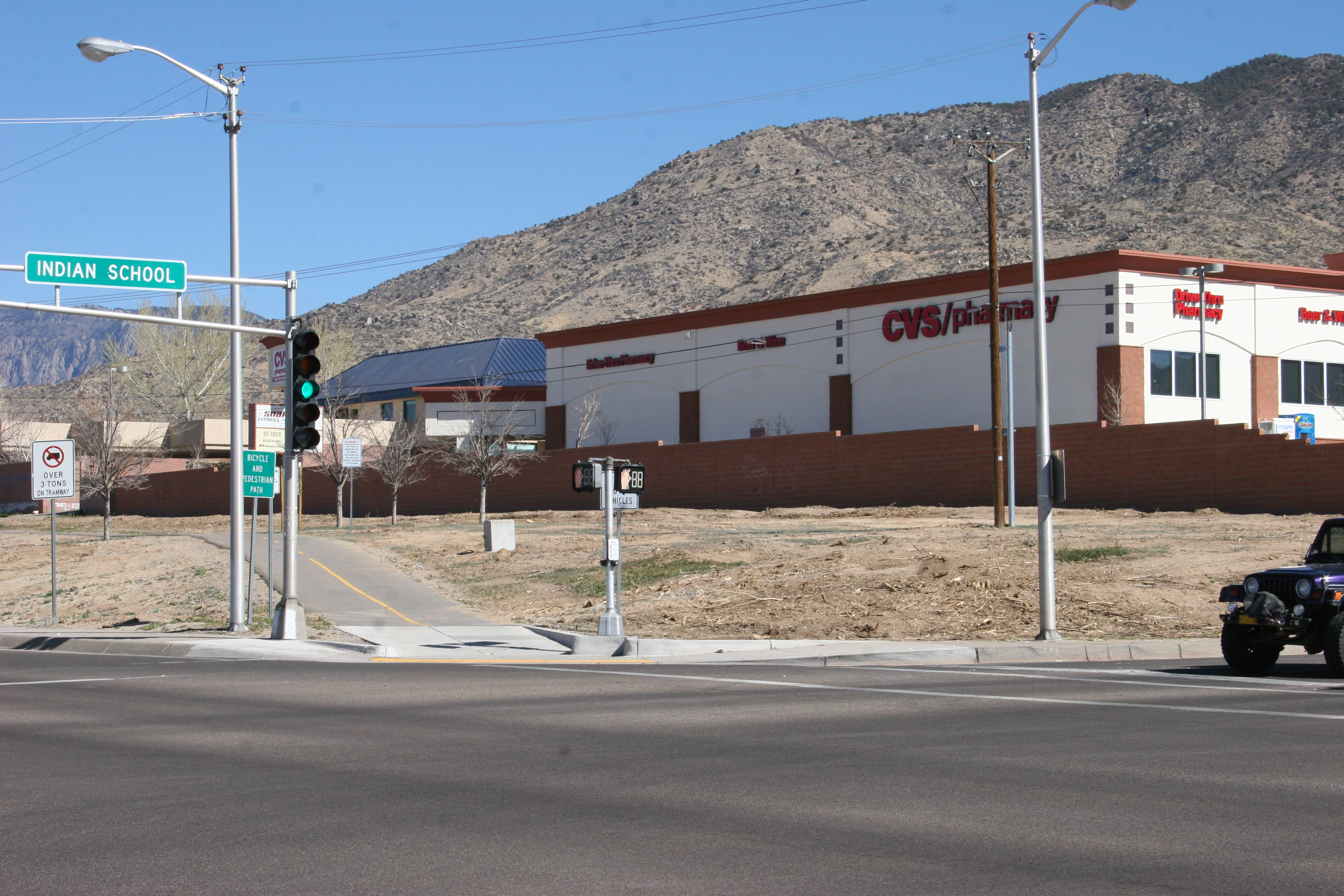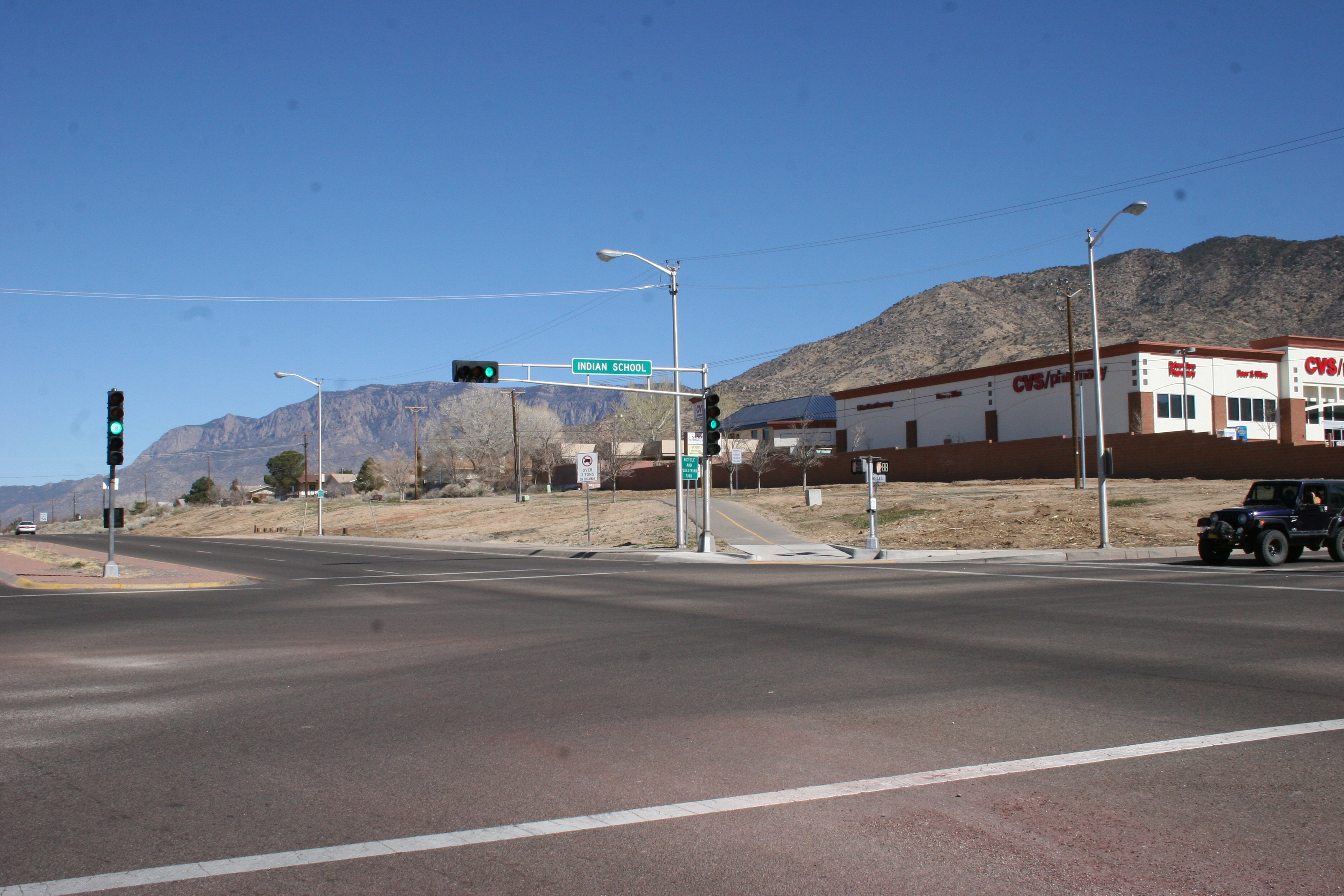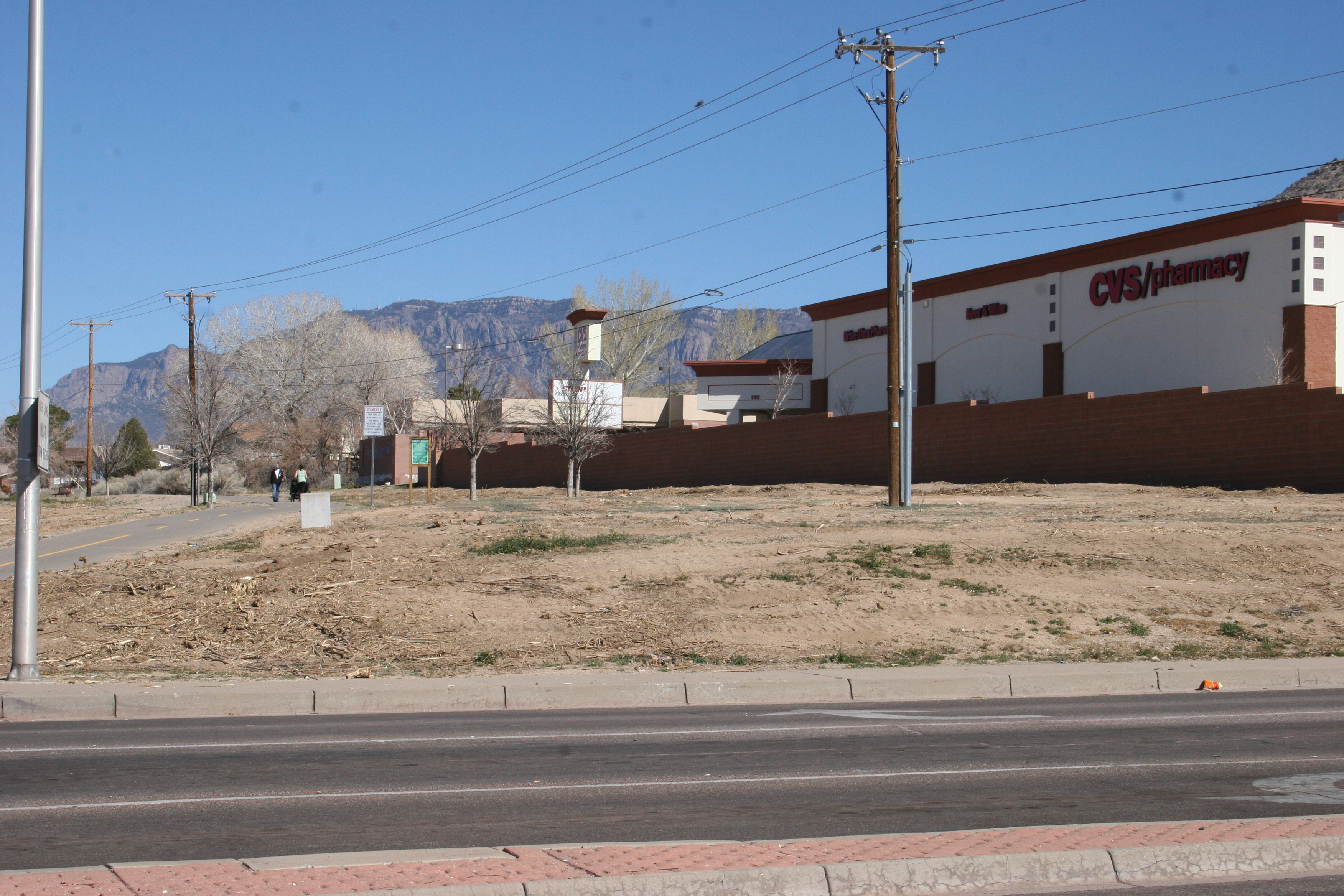Tramway / Indian School Rehabilitation Project

Tramway/Indian School Rehabilitation Project
This project is largely a result of years of lobbing and work from members of the ECNA!
This report documents a public input and technical study process resulting in recommendations and estimated costs to remediate the landscape buffer on the east side of the intersection of Tramway and Indian School Road. For several hundred feet north of Indian School Road to about 75 feet south of the road, the surface has lost plant cover and is eroding into the roadway with the resulting sediment carried away into the storm sewer system. This report provides a process to rehabilitate the landscape in such a way that it prevents the same conditions from returning that created the problems in the first place and to potentially create a template solution that can be applied to other distressed areas in the Tramway landscape buffer. To do so requires understanding the needs of the site from many different aspects. The report examines several possible strategies and from these potential solutions provides recommendations for rehabilitating this site and preventing the existing degraded conditions from reoccurring in the future. The recommendations also include strategies to address new responsibilities that have arisen since the planting strip was planted in the late 1980’s. These include storm water management responsibilities placed on the City by the Federal Environmental Protection Agency, and the growing need to provide wildlife management, conservation whenever possible and the humane relocation of wildlife when necessary.

PROJECT SCOPE
1. Re-vegetation/Landscape Rehabilitation Strategy The primary purpose of this study is to develop feasible design solutions that will mitigate the degradation of the slopes and will rehabilitate the landscape at the northeastern section of the Tramway Boulevard and Indian School Road intersection and will prevent the same conditions (a highly-eroded Prairie Dog habitat) that caused the degradation, from returning.
2. Relocation of Prairie Dog Population In order to rehabilitate this area and to ensure that any future development is not compromised by wildlife habits, the existing Prairie Dog colony at this site has been humanely relocated by NMDOT.
3. Develop a Report to Address Future Design and Issues This phase of the project will include a report (this document) that outlines design strategies that can be implemented to effectively rehabilitate this site. This includes water harvesting, erosion mitigation, Prairie Dog prevention, and grading strategies.
4. Investigate Similar Scenarios for the Entire Tramway Corridor The Tramway Corridor (the length of Tramway Boulevard from Paseo del Norte, south, to I-40) will be observed and analyzed to determine if similar degradation exists and if so, how the design solution produced may serve as a prototype for rehabilitating other affected areas along the corridor.
Questions about the project
There have been numerous postings regarding the landscape project at Tramway and Indian School. Dan Troy contacted the CABQ Project Coordinator and attempted to summarize the questions posed by Neighbors on Next Door (collected from several posts). Here are his responses.
Both Parks and Accent Landscaping is aware of the plants that have died on site. We will be working with the contractor to time the replacements for the best chance of success. We have to take into consideration nursery stock availability as well as timing for field dug plants such as Pinon. We are aware of what eyesores dead plants are especially on a newly planted landscape. We ask for patience and know that we are aware and planning for the best possible long term outcome for the landscape.
The plants have to grow until they can be identified and differentiated before weeding can be effective. The contractor has scheduled intervals to maintain the site. Once plants can be differentiated weeds will be pulled. I also want to stress that the area is not intended to look like a maintained yard it is intended to be established as a native area. It will look wild and woolly. To the extent possible, the aim is to establish a native plant community that is relatively self sustaining.
The first is a bubbler system that irrigates all of the planted tree, shrub and herbaceous nursery stock. This system is intended to remain operational indefinitely. The second is spray irrigation. This irrigation is to establish the native seeding. Once the native seeding is established and thriving we will ween the plants off of irrigation. All of the native plants are selected for drought tolerance and grow well without irrigation once established.
The gravel protects against erosion and prevents surface evapotranspiration which leaves more moisture available for plants. This technique is often used for native plant restoration with great success.
Unfortunately, if it is not on City property we can’t do anything about it. It is frustrating because plants like the Ailanthus (AKA Chinese Sumac, Tree of heaven) are systemic and spread via root systems and seeds. We had lengthy conversations with COA Clean Cities who will be taking over maintenance of the site after the two year maintenance period. They are aware of the issue and said they will do their best to control re-establishment of Ailanthus on the site.
Please feel free to share this on Next Door. If you or the neighborhood has any other questions or concerns please don’t hesitate to contact me. Thanks, JESSE SCOTT project coordinator o 505.768.5364 m 505.228.5582 cabq.gov/parksandrecreation


















